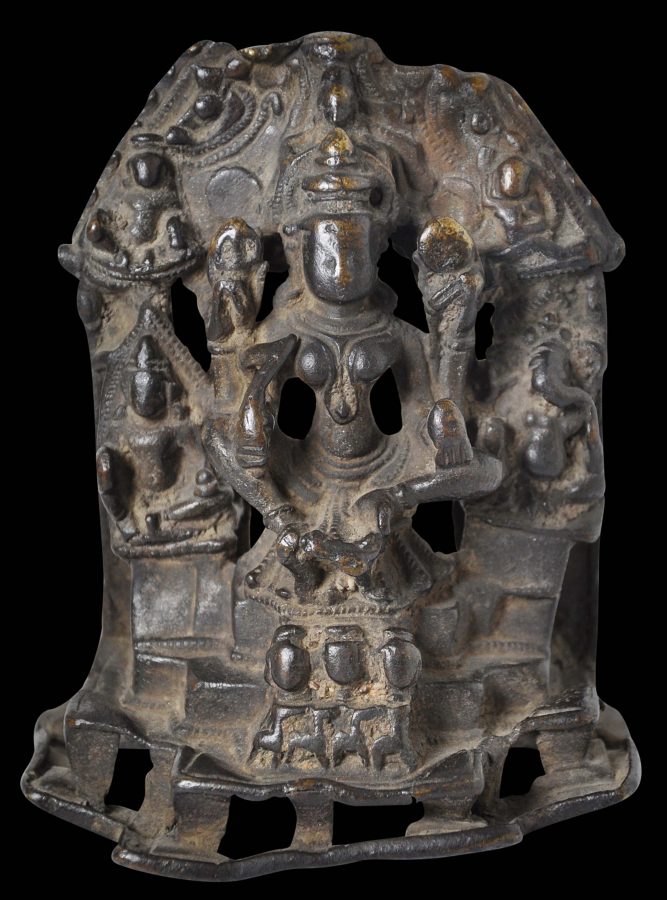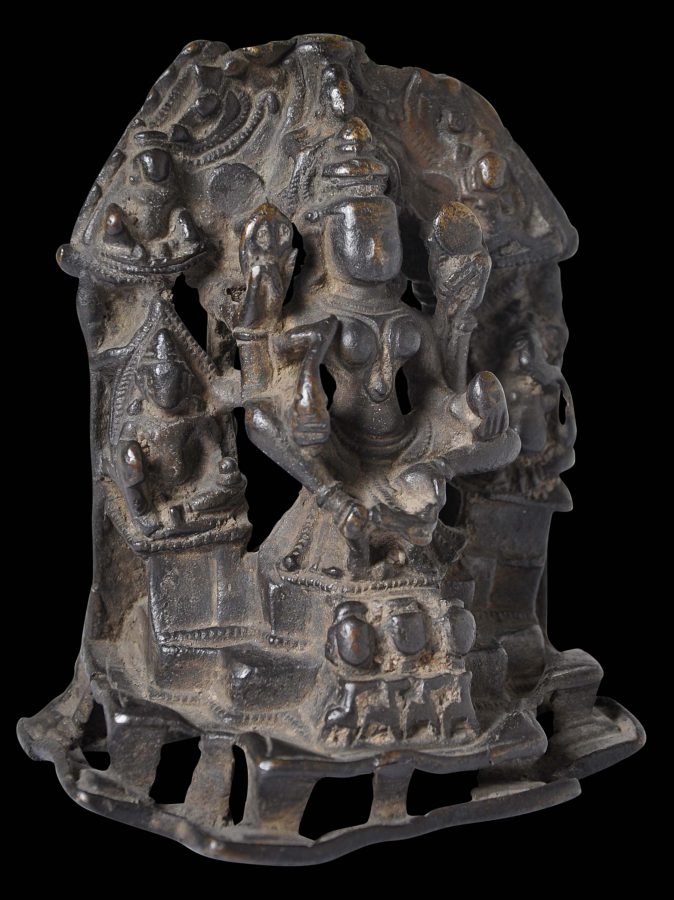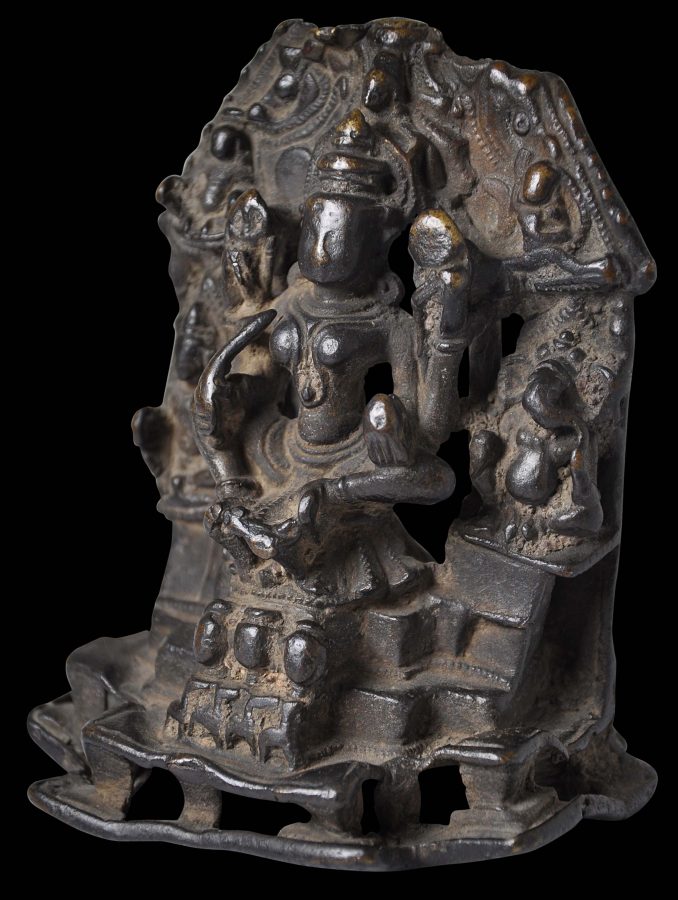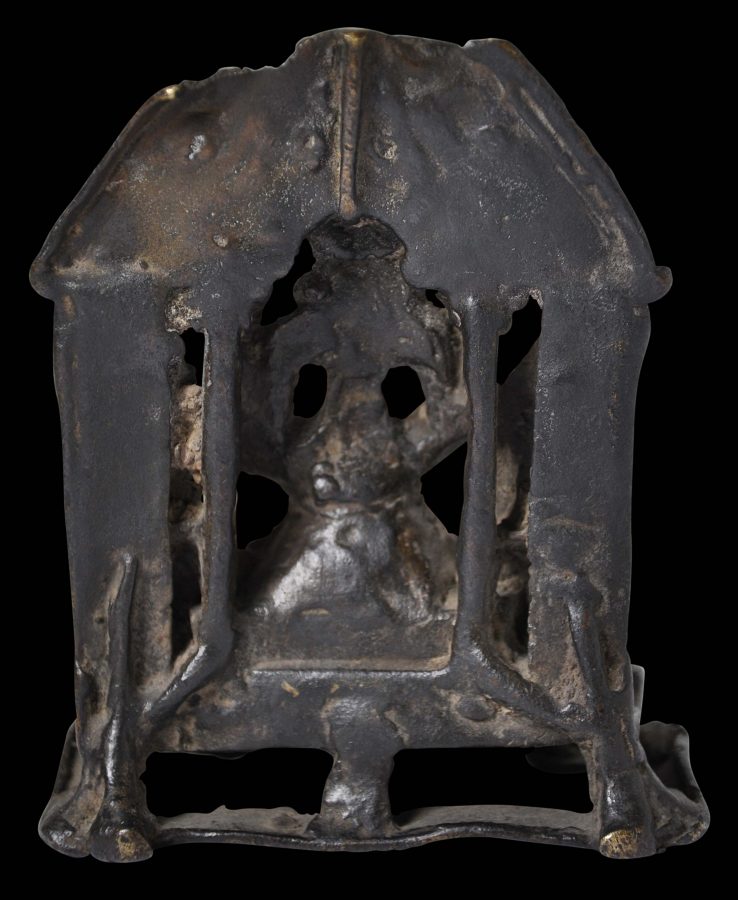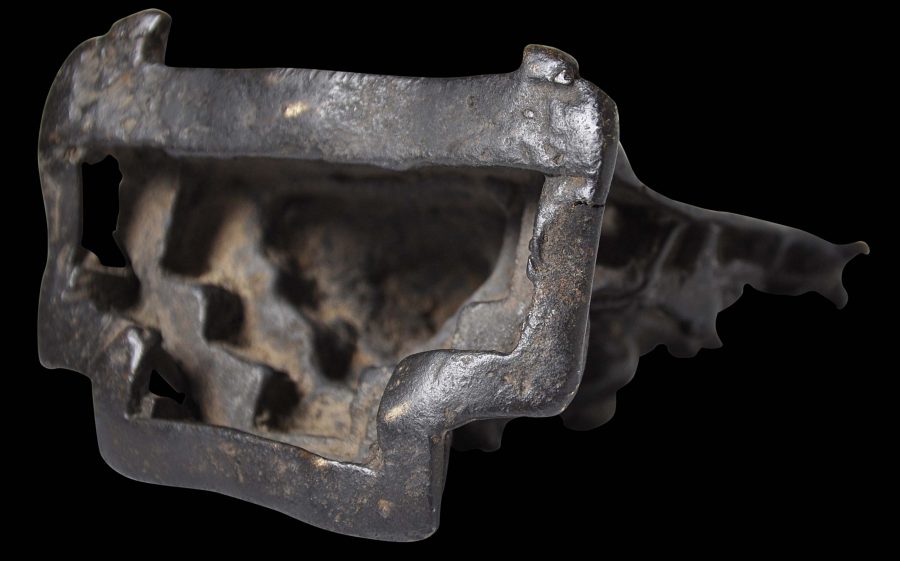The complexity and exuberance of this image is typical of Deccan bronzes produced during the time of the Chalukyas, a dynasty that ruled parts of the Deccan from 973AD to 1189AD.
It shows a central image of Durga seated in lalitasana, with Ganesh on the left and what is probably Murugan (Skanda) on the right, as well as other deities in attendance. The goddess has four arms and holds various attributes. Three skulls decorate the platform beneath her feet.
The image is well worn from age and ritual and its considerable antiquity is obvious. Deccan bronzes of this age are difficult to come by.
References
Dye, J.M., The Arts of India: Virginia Museum of Fine Arts, Philip Wilson Publishers, 2001.
Pal, P., Art from the Indian Subcontinent: Asian Art at the Norton Simon Museum, Yale University Press, 2003.


